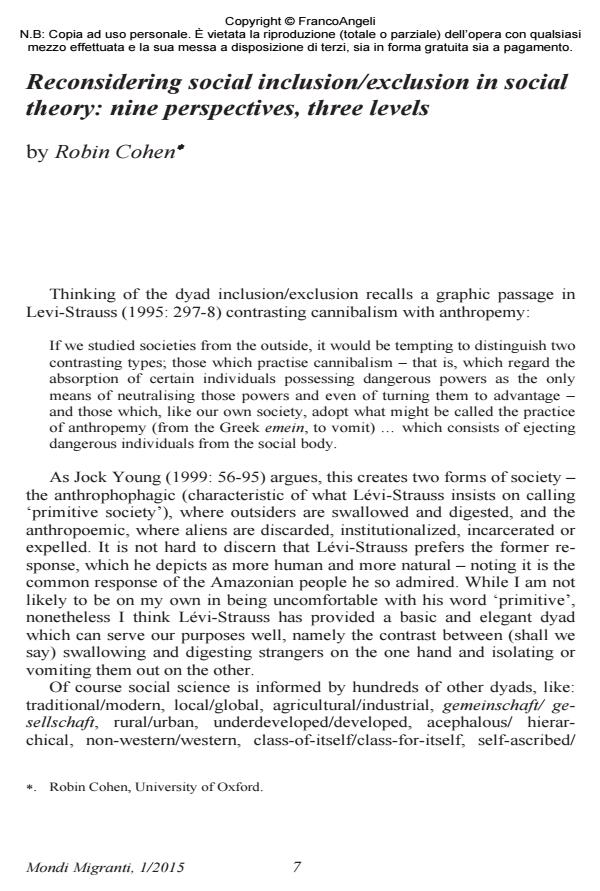Reconsidering social inclusion/exclusion in social theory: nine perspectives, three levels
Journal title MONDI MIGRANTI
Author/s Robin Cohen
Publishing Year 2015 Issue 2015/1
Language English Pages 23 P. 7-29 File size 87 KB
DOI 10.3280/MM2015-001001
DOI is like a bar code for intellectual property: to have more infomation
click here
Below, you can see the article first page
If you want to buy this article in PDF format, you can do it, following the instructions to buy download credits

FrancoAngeli is member of Publishers International Linking Association, Inc (PILA), a not-for-profit association which run the CrossRef service enabling links to and from online scholarly content.
A dyadic mode of reasoning is used to consider social behaviour and practices that generate social inclusion and exclusion in contemporary globalized societies. After reviewing definitions of social inclusion/exclusion and their relationship to one another, the author examines nine perspectives on social exclusion and three levels of societal analysis through which social theorists attempt to understand inclusionary/exclusionary dynamics, processes and outcomes. Special attention is then given to the issues of inclusion/exclusion with regard to migration and citizenship and to the emergence and employment of these concepts in contemporary debates.
Keywords: Social inclusion; social exclusion; dyadic thinking; multi-dimensional exclusion; migration.
- Education of children with disabilities in New Delhi: When does exclusion occur? Parul Bakhshi, Ganesh M. Babulal, Jean-Francois Trani, Stefano Federici, in PLOS ONE /2017 pp.e0183885
DOI: 10.1371/journal.pone.0183885 - Strangers and Migrants in the Making of African Societies: A Conceptual and Historical Review Robin Cohen, in Fudan Journal of the Humanities and Social Sciences /2019 pp.45
DOI: 10.1007/s40647-017-0203-x
Robin Cohen, Reconsidering social inclusion/exclusion in social theory: nine perspectives, three levels in "MONDI MIGRANTI" 1/2015, pp 7-29, DOI: 10.3280/MM2015-001001